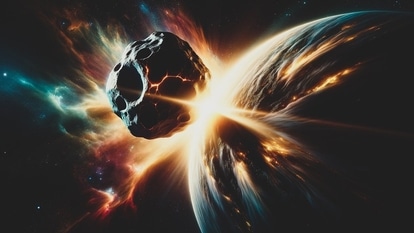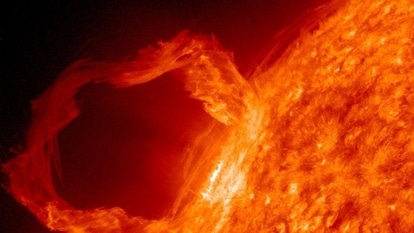Fast-moving solar winds BREAK magnetic field over Earth; dangerous solar storms to follow
Fast moving solar winds have created a CIR (Co-rotating interaction region) on the magnetosphere of Earth. Now, multiple solar storms are expected between December 8 and 9.






 View all Images
View all ImagesAs the multiple active sunspots on the Earth-facing disk of the Sun poses a new threat of solar disturbances, we are already seeing the first wave of solar storms. A solar storm struck the Earth in the early hours of December 7 and it has caused a serious issue for us. The solar storm was caused by fast-moving solar winds meeting slower solar winds. When these varying magnetic fields interact among themselves in the upper atmosphere of Earth, it causes a rip in our magnetosphere which is known as a Co-rotating Interaction Region (CIR). This hole in the magnetosphere lets other solar particles easily through it and this can lead to multiple solar storms between today, December 8 and tomorrow December 9. Read on to know more.
The development was reported by SpaceWeather.com which stated, “A co-rotating interaction region (CIR) hit Earth's magnetic field during the early hours of Dec. 7th. CIRs are transition zones between streams of fast and slow solar wind; they contain shock waves that can spark solar storms. This CIR caused a minor G1-class storm around 1300 UT. More storms may be in the offing when the fast solar wind following the CIR arrives on Dec. 8th or 9th”.
Multiple solar storms can hit the Earth in next 48 hours
While it is impossible to calculate the intensity of this incoming solar storm, it can be expected that the overall impact would be higher than the usual solar storms. This happens because the CIR rips open the magnetosphere and allows easier passage of the solar particles. So, even a solar storm which would have normally been around G1-class can have impacts as high as G2 or G3. The National Oceanic and Atmospheric Administration (NOAA) has not released any advisory regarding it at the moment.
We should be aware that a strong solar storm can disrupt GPS and cause shortwave radio frequency blackouts. A severe solar storm can even interrupt mobile data, internet reception and cause power grid failure. However, such a strong solar storm has not been seen since the Carrington event in 1859.
DSCOVR satellite of NOAA looks for the eye of the storm
NOAA monitors the solar storms and Sun's behavior using its DSCOVR satellite which became operational in 2016. The recovered data is then run through the Space Weather Prediction Center and the final analysis is prepared. The different measurements are done on temperature, speed, density, degree of orientation and frequency of the solar particles.
Catch all the Latest Tech News, Mobile News, Laptop News, Gaming news, Wearables News , How To News, also keep up with us on Whatsapp channel,Twitter, Facebook, Google News, and Instagram. For our latest videos, subscribe to our YouTube channel.
































